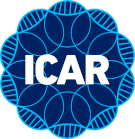Headings Format: Difference between revisions
m (Bgolden moved page Wiki Headings Format SOP to Headings Format SOP) |
(Added best practice note about exceeding heading level 2) |
||
| (8 intermediate revisions by the same user not shown) | |||
| Line 1: | Line 1: | ||
[[Category: SOP]] | [[Category: SOP]] | ||
A within- | |||
This page provides the standards for headings and how to create them. There should be no need for a heading with the page's title since the page's name should be its title. For example, a page on DNA Technology should be named "DNA_Technology". Headings can be created in the visual editor ("Edit" tab top right of the page) using the dropdown menu in the top left of the visual editor. | |||
There is '''no need to add numbering within a page'''; Mediawiki automatically creates the within page numbering. | |||
A within-page table of contents such as the one below this paragraph is automatically created by Mediawiki when three or more headings of any level are created within a page. | |||
=Level 1 heading= | =Level 1 heading= | ||
Body Text - The wikitext markup language provides easy-to-use symbols to create most document elements. Authors are encouraged to | Body Text - The wikitext markup language provides easy-to-use symbols to create most document elements. Authors are encouraged to avoid inserting more complex HTML directives and use only default font. | ||
=Level | Authors are encouraged to view the markup source (using the source editor) on pages that contain more complex elements to see examples of markup syntax. | ||
==Level 2 heading== | |||
The best practice for headings is to not exceed level 2 headings. Authors should strive to avoid heading levels 3, 4, etc. Using bullet lists or numbered lists can often replace the use of headings levels beyond 2. | |||
For completeness, here are what additional heading levels look like: | |||
===Level 3 heading=== | ===Level 3 heading=== | ||
====Level 4 heading==== | ====Level 4 heading==== | ||
=====Level 5 heading===== | =====Level 5 heading===== | ||
=New level 1 heading= | =New level 1 heading= | ||
This is the second level 1 heading within this | This is the second level 1 heading within this page. | ||
==New level 2 heading== | ==New level 2 heading== | ||
When a new level 2 heading is created after a new level 1 heading, it will be numbered beginning with the new level 1 heading's number. | When a new level 2 heading is created after a new level 1 heading, it will be numbered beginning with the new level 1 heading's number. | ||
| Line 32: | Line 26: | ||
etc., etc. | etc., etc. | ||
For formatting of bullet lists see [[ | For formatting of bullet lists see [[Bullet Lists Format|Bullet Lists Format SOP]] | ||
Latest revision as of 17:17, 10 October 2023
This page provides the standards for headings and how to create them. There should be no need for a heading with the page's title since the page's name should be its title. For example, a page on DNA Technology should be named "DNA_Technology". Headings can be created in the visual editor ("Edit" tab top right of the page) using the dropdown menu in the top left of the visual editor.
There is no need to add numbering within a page; Mediawiki automatically creates the within page numbering.
A within-page table of contents such as the one below this paragraph is automatically created by Mediawiki when three or more headings of any level are created within a page.
Level 1 heading
Body Text - The wikitext markup language provides easy-to-use symbols to create most document elements. Authors are encouraged to avoid inserting more complex HTML directives and use only default font.
Authors are encouraged to view the markup source (using the source editor) on pages that contain more complex elements to see examples of markup syntax.
Level 2 heading
The best practice for headings is to not exceed level 2 headings. Authors should strive to avoid heading levels 3, 4, etc. Using bullet lists or numbered lists can often replace the use of headings levels beyond 2.
For completeness, here are what additional heading levels look like:
Level 3 heading
Level 4 heading
Level 5 heading
New level 1 heading
This is the second level 1 heading within this page.
New level 2 heading
When a new level 2 heading is created after a new level 1 heading, it will be numbered beginning with the new level 1 heading's number.
New level 3 heading
etc., etc.
For formatting of bullet lists see Bullet Lists Format SOP
